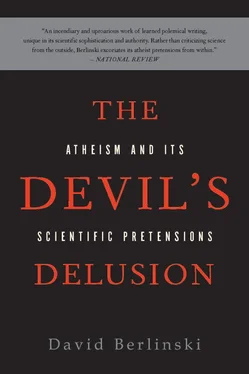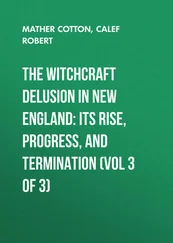My sympathies are nonetheless with the old, sour, unregenerate Weinberg. He had a point. The arena of the elementary particles— his arena— is rather a depressing place, and if it resembles anything at all it rather resembles a fluorescent-lit bowling alley seen from the interstate, tiny stick figures in striped bowling shirts jerking up and down in the monstrously hot and humid night.
What is its point?
We seem to live our lives in perfect indifference to the Standard Model of particle physics, the world we inhabit not only remote from the world it describes but different in detail, thank God.
Over there, fields are pregnant with latent energy, particles flicker into existence and disappear, things are entangled, and no one can quite tell what is possible and what is actual, what is here and what is there, what is now and what was then. Solid forms give way. Nothing is stable. Great impassive symmetries are in control, as vacant and unchanging as the eye of Vishnu. Where they come from, no one knows. Time and space contract into some sort of agitated quantum foam. Nothing is continuous. Nothing stays the same for long, except the electrons, and they are identical, like porcelain Chinese soldiers. A pointless frenzy prevails throughout.
Over here, space and time are stable and continuous. Matter is what it is, and energy is what it does. There are solid and enduring shapes and forms. There are no controlling symmetries. The sun is largely the same sun now that it was four thousand years ago when it baked the Egyptian deserts. Changes appear slowly, but even when rapid, they appear in stable patterns. There is dazzling variety throughout. The great river of time flows forward. We anticipate the future, but we remember the past. We begin knowing we will end.
The God of the Gaps may now be invited to comment—strictly as an outside observer, of course. He is addressing us. And this is what He has to say: You have no idea whatsoever how the ordered physical, moral, mental, aesthetic, and social world in which you live could have ever arisen from the seething anarchy of the elementary particles.
It is like imagining sea foam resolving itself into the Parthenon.
And even though He is speaking strictly as an observer, perhaps He will be forgiven for asking of Christopher Hitchens, who has wandered into this discussion prepared to dispute anyone at the bar, “Where wast thou when I laid the foundations of the earth? declare, if thou hast understanding.”

These examples may be multiplied at will. They form a common pattern, one in which a mystery is in evidence, but one demanding for its resolution intellectual insights that we do not possess and cannot honestly say we will in time command. No one has the faintest idea whether the immense gap between what is living and what is not may be crossed by any conceivable means. It is therefore no surprise that the National Academy of Sciences has taken pains to affirm that it has already been crossed. “For those who are studying aspects of the origin of life, the question no longer seems to be whether life could have originated by chemical processes involving non-biological components but, rather, what pathway might have been followed.” The view among biochemists actively engaged in research is different. “The de novo appearance of oligonucleotides on the primitive earth,” Gerald F. Joyce and Leslie Orgel remarked in their chapter of a volume entitled The RNA World, “would have been a near miracle.” Oligonucleotides are among the indispensable building blocks of living systems.
A near miracle is a term of art. It is like a near miss. And a miss, it should be recalled, is as good as a mile.
The theories that we have do what they can do, and then they stop. They do not stop because a detail is missing; they stop because we cannot go on. Difficulties are accommodated by the magician’s age-old tactic of misdirection.
Writing about the eye in On the Origin of Species, Darwin confessed that its emergence troubled him greatly. He was nonetheless able to resolve his own doubts in his favor, and ever since, biologists have assumed that inasmuch as Darwin proposed a solution, they need not face a problem. The solution that Darwin proposed and defended was simply to point to countlessly many examples of intermediate visual structures scattered throughout the animal kingdom. It formed an interesting argument. It did not touch the central issue. The eye is not simply a biological organ, although surely it is that. It is a biological organ that allows living creatures to see. If we cannot say what seeing comes to in physical or material terms, then we cannot say whether any theory is adequate to explain the appearance of an organ making sight possible.
This is precisely what we cannot say. The physical details are in part understood. Light strikes the eye in the form of photons but it exits the eye in terms of electrical signals. In between, bipolar cells convey visual information to ganglion cells, which in turn conduct information to the optic nerve. Thereafter the optic nerve conveys electrical signals to the brain. The brain in turn twitches into life, neurons firing here and there, the gooey mass for a moment convulsed.
And directly thereafter, I see the looming mass of Notre Dame, all gray stone and leering gargoyles, a long line of plodding tourists shuffling toward the door leading to the cathedral’s towers, the horses of the National Guard dropping their straw-filled waste in the center of the street as they clip-clop patiently toward their stables, the light, the hot haze, dust dancing in the air.
I open my eyes and my eyes are filled.
How do the twitching nerves, chemical exchanges, electrical flashes, and computational routines of the human eye and brain provide a human being with his experiences ?
The gap opened between causal sequences that with a moving finger we can trace from one point to the next and the light-enraptured awareness to which they give rise is unfathomably large because it spans an incommensurable distance. The processes involved in sight are biological, chemical, and in the end physical. It may well be that at some point in the future, a physicist, using quantum electrodynamics perhaps, might be in a position to write down their equations. Whether such an equation will encompass our experiences—why, this is something we simply do not know.
“Today we cannot see whether Schrödinger’s equation contains frogs, musical composers, or morality,” Richard Feynman remarked in his lectures on turbulence. The remark has been widely quoted. It is honest.
The words that follow are rarely quoted. “We cannot say whether something beyond it like God is needed, or not. And so we can all hold strong opinions either way.”
These words form an obvious inferential chain. If we do not know whether Schrödinger’s equation will one day accommodate our experience, we certainly do not know whether our experiences reflect anything less than a miracle.
For the moment, if asked to stand and declare ourselves on the most elementary aspects of the world in which we live— We see it —we can say nothing.
TIME, DEATH, LIFE, AND LONGING
For almost as long as the physical sciences have made their claims, poets and philosophers have observed that there is something inhuman about the undertaking they represent. They are right. We gain purchase on the physical world first by stripping it to its simplest form, and second by emptying it of its emotional content. Whatever the elementary particles may be doing, they are not forming political alliances, or looking on one another with mute incoherent longing, or casting an anxious eye on the clock, or waking with a start in the early hours of the morning, wondering what it all means, or coming to realize that they are destined to fall like the leaves of the trees leaving not a trace behind.
Читать дальше













